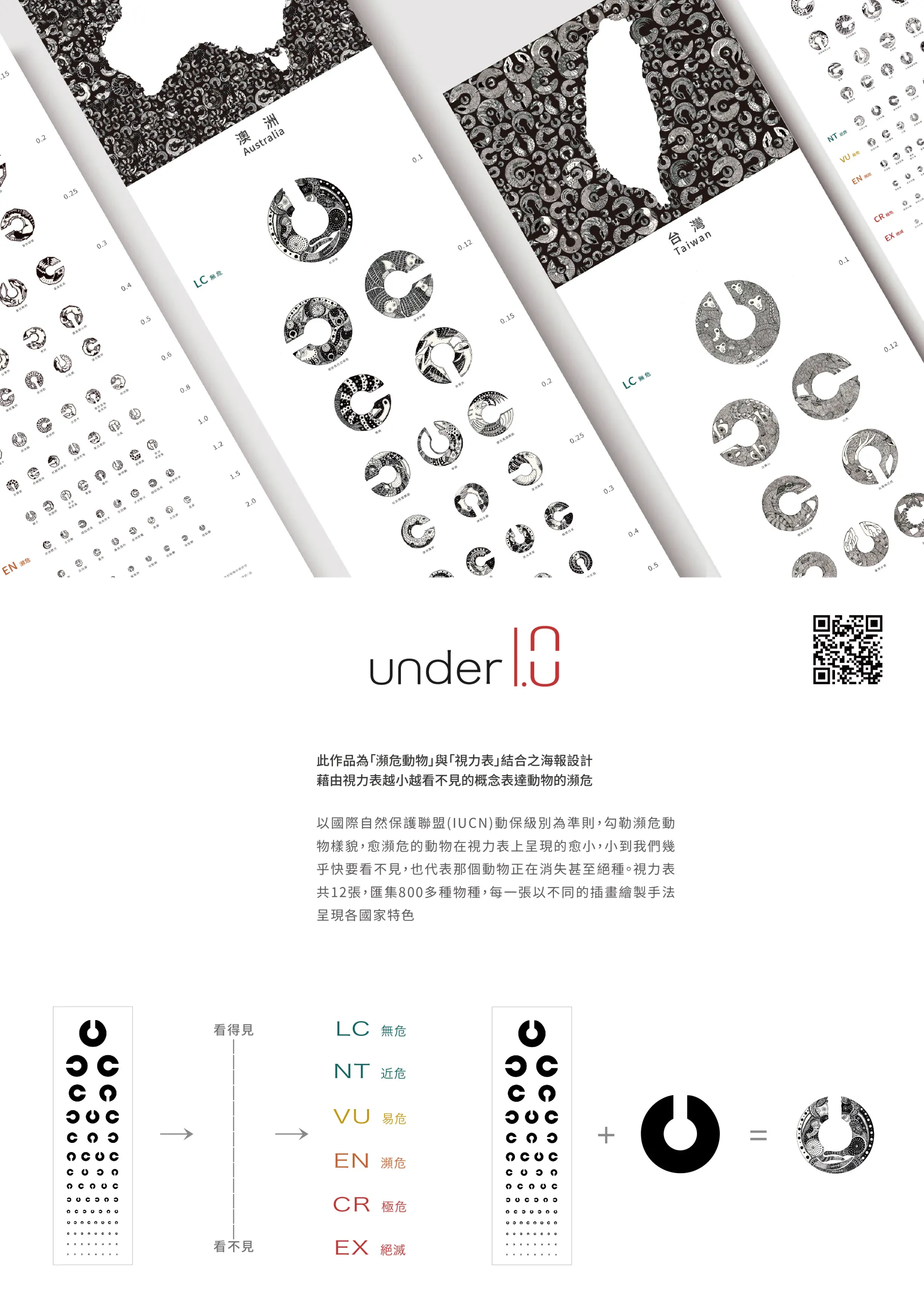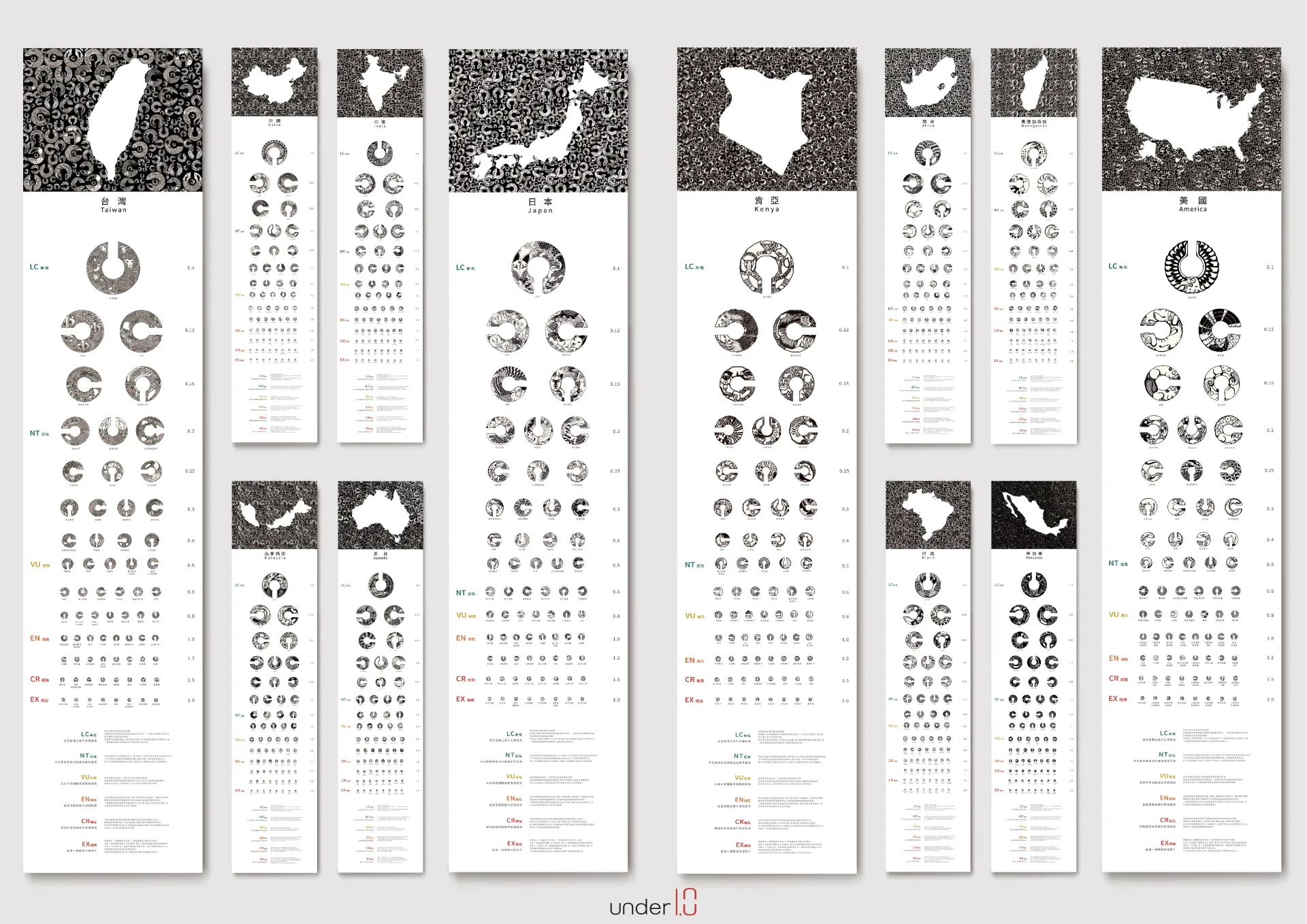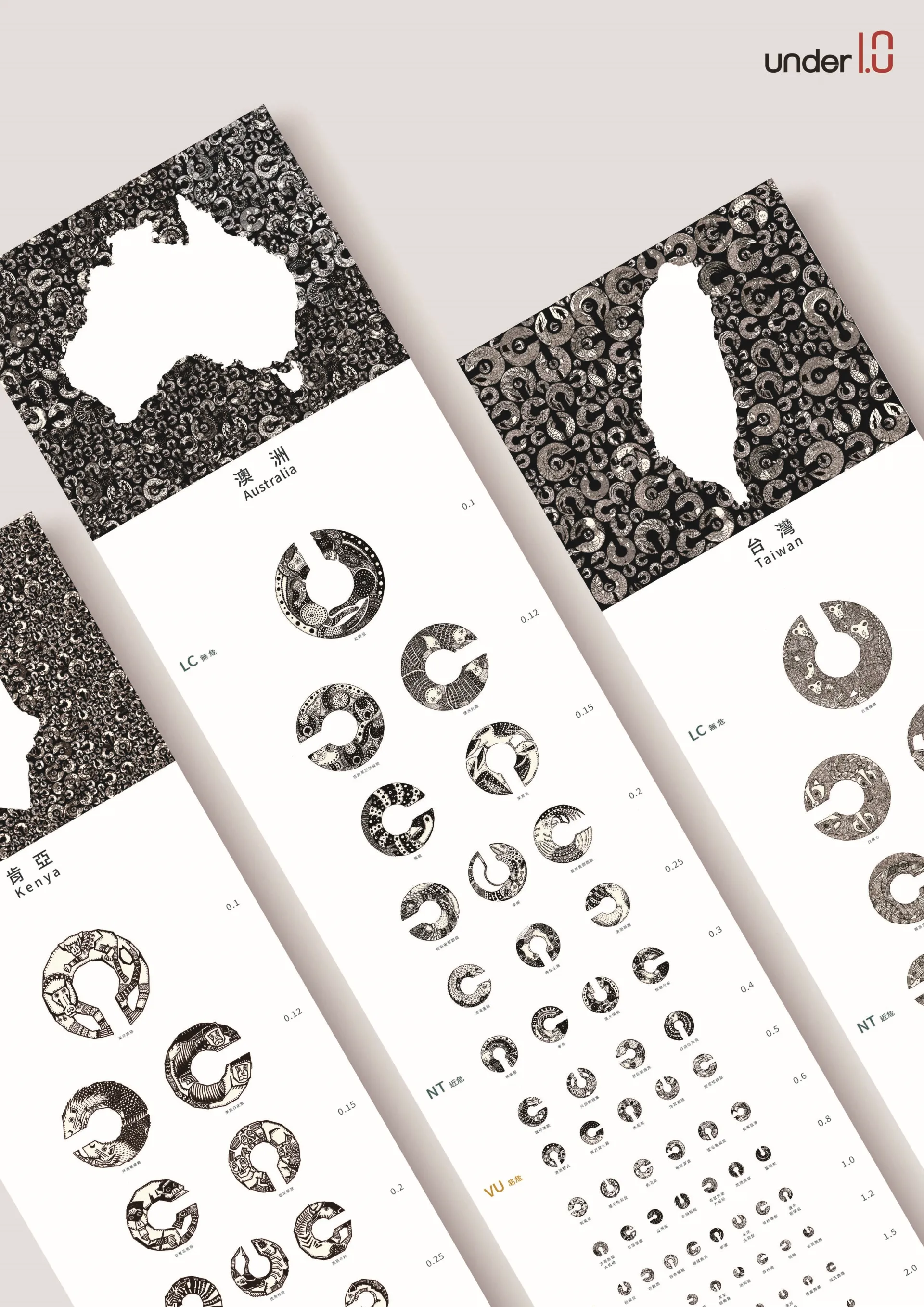


【獎項 Prizes】 銅獎 Bronze Award
【國家或地區 Country/Region】 臺灣 Taiwan
【公司/團隊 Company/Group】
【設計師姓名 Designer】 萬向欣
【作品介紹 Description】
此設計為瀕危動物與視力表結合的海報設計。 藉由視力表越小越看不見的概念表達動物的瀕危。 國際自然保護聯盟(IUCN)將動物編入了9種保護級別,其中6種為基本級別: 無危(LC)近危(NT)易危(VU)瀕危(EN)極危(CR)絕滅(EX) 我的視力表以此為準則,愈瀕危的動物在視力表上呈現得愈小,小到我們幾乎快要看不見,也代表那個動物正在消失甚至絕種。 視力表及C字大小均依照國際標準視力表尺寸1:1等比繪製,C字則都是動物所構成的字型圖像,每個C都是不同的動物。 視力表共12張,每一張代表不同國家,彙集了800多種物種,其中有9個國家為超級生物多樣性國家同盟(LMMC 視力表以不同的插畫繪製手法來呈現各國家風格及特色元素。例如澳洲的原住民點畫、墨西哥的馬雅文明圖騰 海報中的每個動物C下方均有動物的名字。 而1.0為人類的標準視力,表示在1.0以下的動物是我們更要去關注的,這也是我的主題名Under 1.0的由來。 希望透過此創作讓大家更認識動物及對動保意識的關心。
FB:Under 1.0 This is a poster design that combines endangered species with eye charts. It uses the idea of diminishing vision to express the threat towards these species. The International Union for Conservation of Nature classifies animals into nine categories of conservation status, among which six are primary classifications: Least Concern (LC) Near Threatened (NT) Vulnerable (VU) Endangered (EN) Critically Endangered (CR) Extinct (EX) My eye chart poster utilizes these criteria. The more endangered a species is, the smaller it is on the eye chart. Some are barely distinguishable to the eye, which means that the species is on the verge of extinction. The eye charts and their corresponding 'Landolt C' symbols are drawn according to the exact measurements of the international standard eye chart. Each C symbol is an illustration of a different animal species. There are twelve eye charts in total, each representing a different country, comprising 800+ animal species. Nine of these countries are Like-Minded Megadiverse Countries. The eye charts were also illustrated in styles uniquely representative of each country, such as the dot painting of Australian indigenous peoples, and the totems of Mexico's Maya civilization. Each C symbol on the poster is labeled with the corresponding animal name. Since 1.0 is the standard for visual acuity, the animals who are below that standard deserve more of our attention. Therefore, I have titled this project 'Under 1.0.' I hope my work promotes additional knowledge and awareness with respect to animals and animal conversation.



